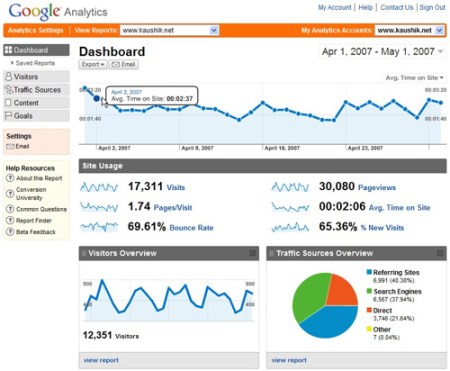
Google is serious about vamping up personal privacy on its site. Google launched a tool called Google Dashboard to give the average Google-user more control over their personal settings. Google Dashboard allows people to see what information is being collected about them. Dashboard is supposed to make checking up on your data scattered about Google’s various Web services a lot easier.
How to access Google Dashboard:
- Sign into your Google Account
- Click on the settings link at Google.com and select “Google Account Settings” (Or follow this link)
- Select “View data stored with this account”… it should be listed under “Personal Settings”
- Enter your Google account password again
Once in Dashboard
There will be a list of your Google services on the left-hand side containing information regarding your recent Google activity and what services you’ve used. The statistics feature will show you what services you haven’t used or you haven’t used in a while. If you need to detach yourself for so0me of these services, navigate to the settings for the service (i.e. Gmail settings) and click “unjoin.”
Also from inside Dashboard you can manage your privacy settings for these services—unfortunately, not all of Google’s services are available for managing on this handy new feature. Maps, Wave, Chrome Bookmark Sync, Google News, and services like Google Analytics and AdSense are not currently available on Dashboard, but a spokesperson for Google says the company plans on integrating all of its services into Dashboard in the future.
Editors' Recommendations
- How to change margins in Google Docs
- How to delete a file from Google Drive on desktop and mobile
- How to delete files on a Chromebook
- The best web browsers for 2024
- The best resume templates for Google Docs


